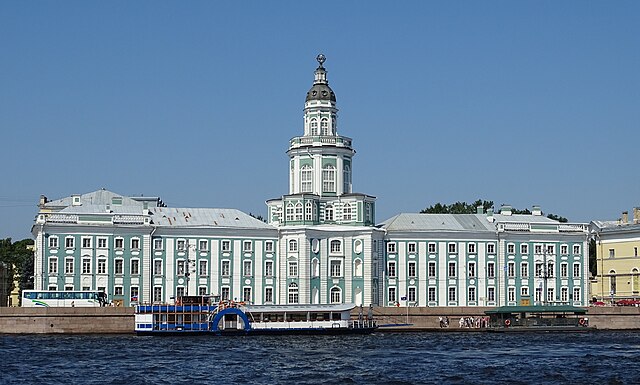The Kunstkamera or Kunstkammer is a public museum located on the Universitetskaya Embankment in Saint Petersburg, facing the Winter Palace. Its collection was first opened to the public at the Summer Palace by Peter the Great in 1714, making it Russia's first museum. Enlarged by purchases from the Dutch collectors Albertus Seba and Frederik Ruysch, the museum was moved to its present location in 1727. Having expanded to nearly 2,000,000 items, it is formally organized as the Russian Academy of Science's Peter the Great Museum of Anthropology and Ethnography, abbreviated in Russian as the МАЭ or МАЭ РАН.
View of the Kunstkamera across the Neva
Kunstkamera in 1740
Cabinets of curiosities, also known as wonder-rooms, were encyclopedic collections of objects whose categorical boundaries were, in Renaissance Europe, yet to be defined. Although more rudimentary collections had preceded them, the classic cabinets of curiosities emerged in the sixteenth century. The term cabinet originally described a room rather than a piece of furniture. Modern terminology would categorize the objects included as belonging to natural history, geology, ethnography, archaeology, religious or historical relics, works of art, and antiquities. In addition to the most famous and best documented cabinets of rulers and aristocrats, members of the merchant class and early practitioners of science in Europe formed collections that were precursors to museums.
"Musei Wormiani Historia", the frontispiece from the Museum Wormianum depicting Ole Worm's cabinet of curiosities.
A male Narwhal, whose tusk, as a Unicorn horn, was a common piece in cabinets.
A corner of a cabinet, painted by Frans II Francken in 1636 reveals the range of connoisseurship of a Baroque-era virtuoso
Fold-out engraving from Ferrante Imperato's Dell'Historia Naturale (Naples 1599), the earliest illustration of a natural history cabinet






